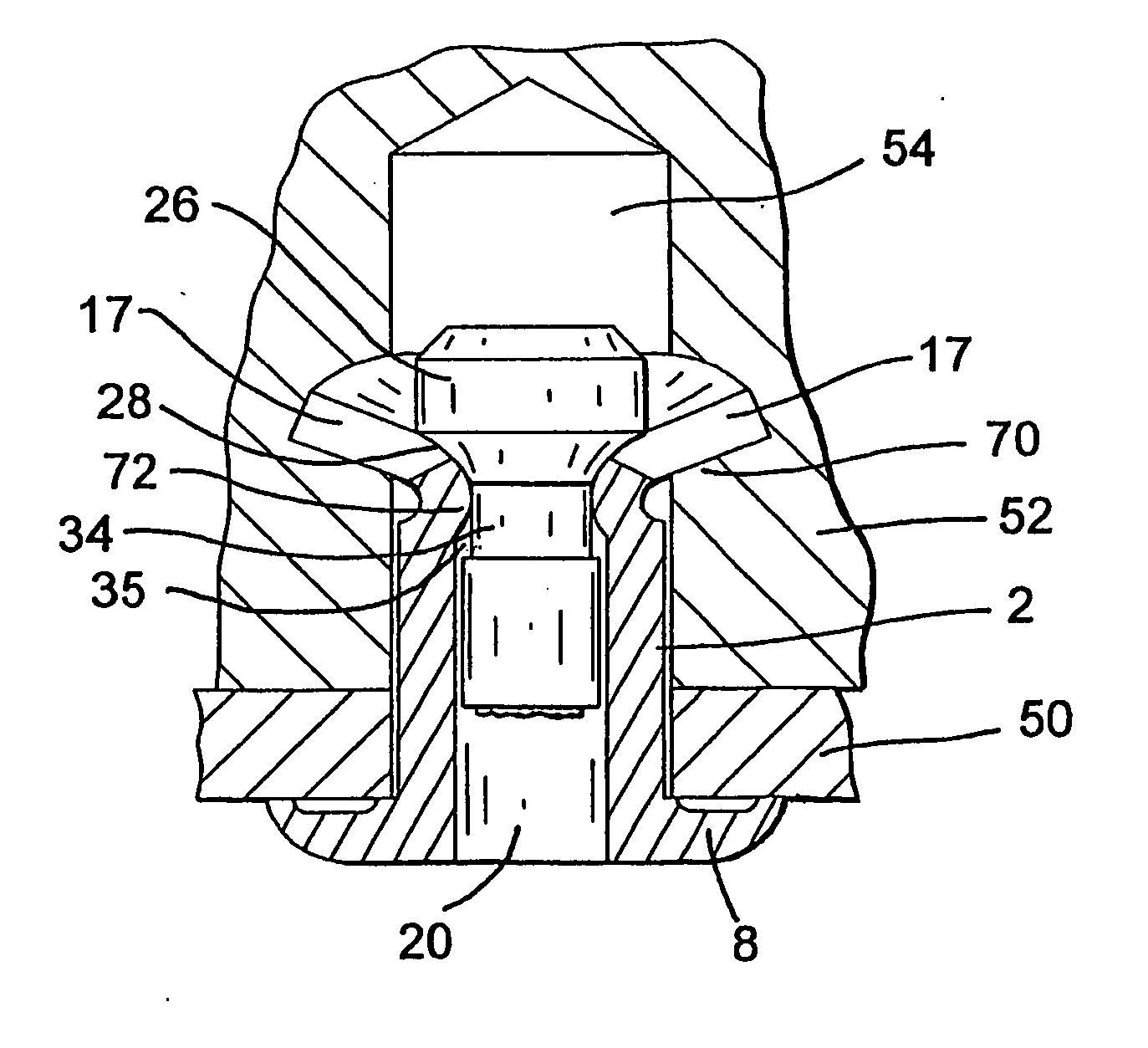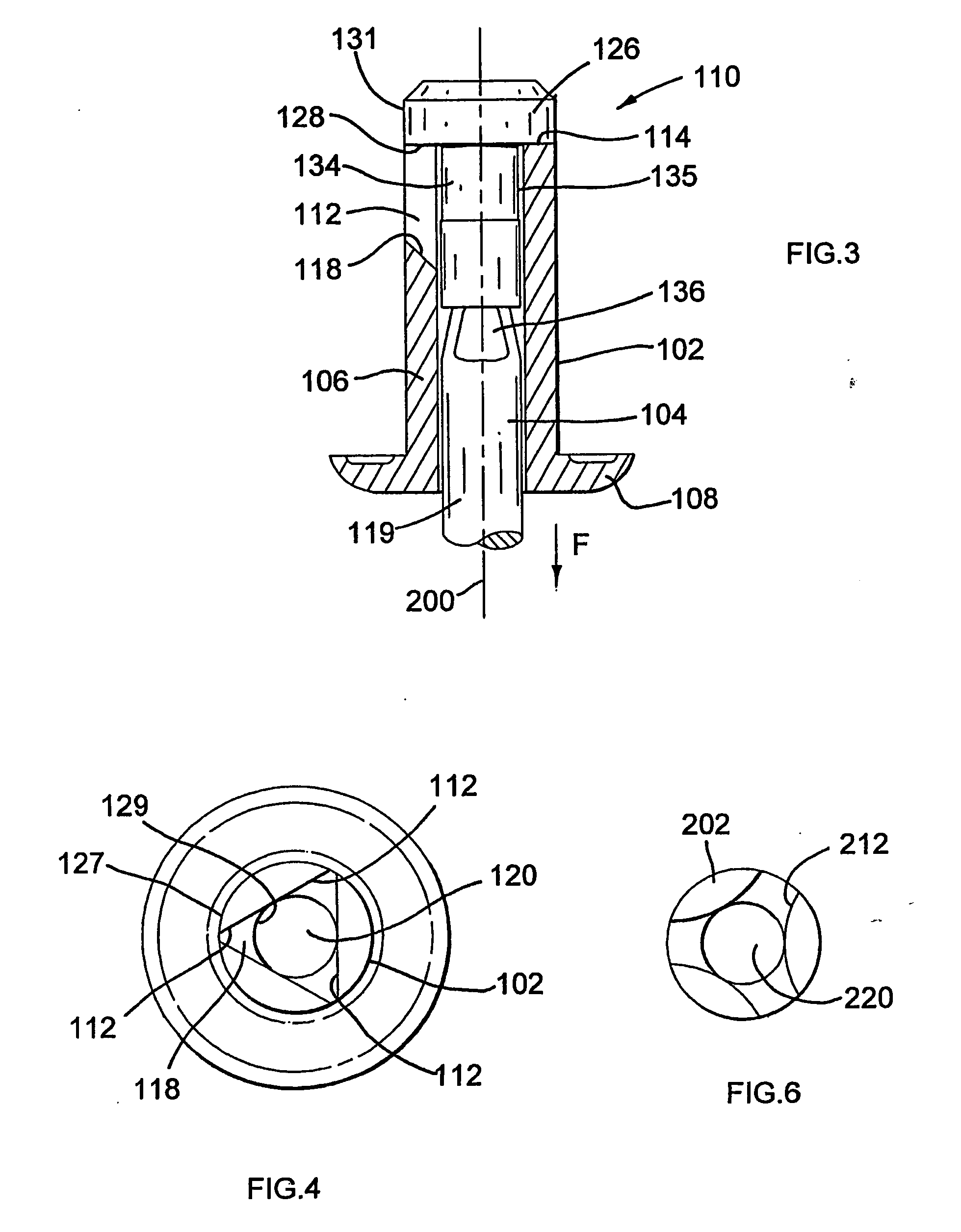Blind rivet and method to make same
a blind rivet and rivet body technology, applied in the field of improved blind rivets, can solve the problems of complex manufacturing process required to form the slots in the shank of the rivet body, requiring a special skill, and subject to rapid wear, and conventional rivets having preformed slots are relatively expensiv
- Summary
- Abstract
- Description
- Claims
- Application Information
AI Technical Summary
Benefits of technology
Problems solved by technology
Method used
Image
Examples
Embodiment Construction
[0037] A peel-type blind rivet assembly (10), according to the prior art, is seen in FIG. 1. This blind rivet assembly (10) comprises a tubular body (2) containing a mandrel (4), and having a head (8) formed by a flattened flange portion, presenting a circumferential shoulder (9) for engagement with a first workpiece. Four equally spaced elongate slots (12) are provided in the end (14) of the shank (6) remote from the head (8) and provide an expandable portion (16) of the shank, dividing this expandable end portion into four distinct legs (17) therebetween. The base (18) of each slot (longitudinally remote from an end (14) of the shank) is axially inclined relative to an axis of the shank such that the length of the slot is longer where it is adjacent to the inner surface of the body (adjacent to the bore (20)) and is of a shorter longitudinal length where it is adjacent to the outer surface of the body.
[0038] The mandrel (4) is of conventional design comprising a head (26) having ...
PUM
| Property | Measurement | Unit |
|---|---|---|
| external diameter | aaaaa | aaaaa |
| internal diameter | aaaaa | aaaaa |
| width | aaaaa | aaaaa |
Abstract
Description
Claims
Application Information
 Login to View More
Login to View More - R&D
- Intellectual Property
- Life Sciences
- Materials
- Tech Scout
- Unparalleled Data Quality
- Higher Quality Content
- 60% Fewer Hallucinations
Browse by: Latest US Patents, China's latest patents, Technical Efficacy Thesaurus, Application Domain, Technology Topic, Popular Technical Reports.
© 2025 PatSnap. All rights reserved.Legal|Privacy policy|Modern Slavery Act Transparency Statement|Sitemap|About US| Contact US: help@patsnap.com



